
Using humanure in the garden
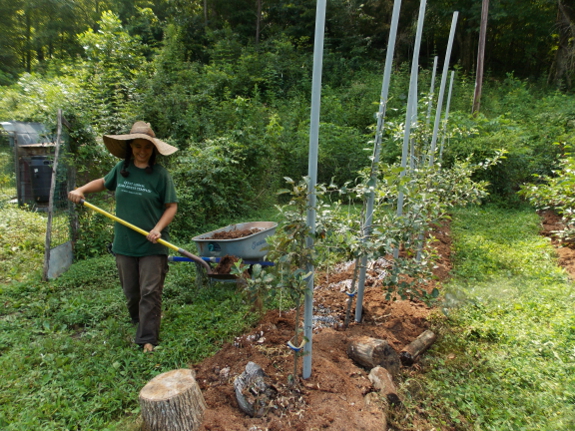
"Guess what this is?" I
said to Mark yesterday morning as he walked past. My voice was
full of the excitement of finding a new source of organic matter to
mulch with, so he hit the nail on the head with his first try. "Humanure," my long-suffering husband answered, a distinct lack of enthusiasm coloring his voice.
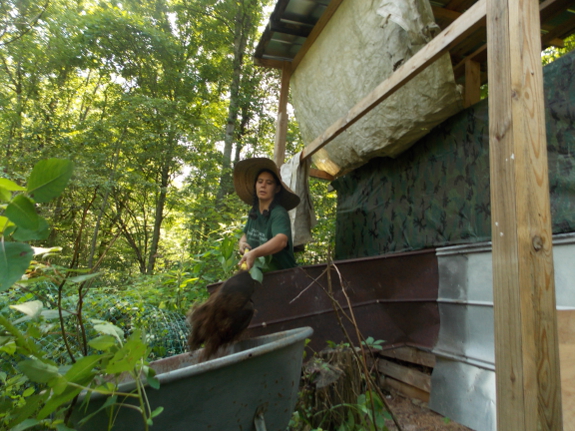
We
closed off the first bin of our composting toilet last November, and I
wrote that I planned to wait a year...or maybe two...before breaking
into the stash. However, my standards always start slipping when I clean out the deep bedding in the chicken coops
and still need more high-carbon materials to mulch the
perennials. I figured, as long as no chunks of poo were visible in
last year's humanure bin, I could use it beneath plants that wouldn't
be producing until this time next year. Really, that gives the
material almost 24 months between excretion and eating, right?
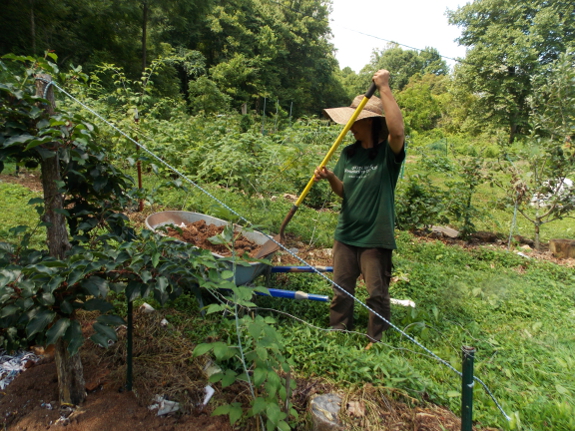
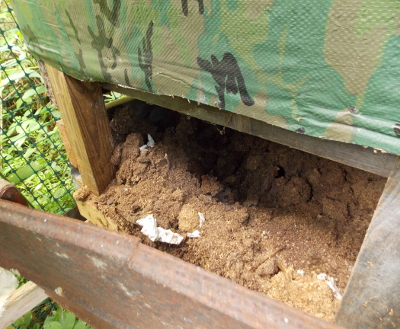 When
I opened up the composting toilet bin, I was surprised to see that the
contents really just looked like slightly aged sawdust. There were
some chunks of toilet paper around the edges, where the contents were
too dry for decomposition, but all other signs of human waste were
gone. I set aside most of the residual toilet paper as we went
along and used the four wheelbarrows of organic matter that remained
beneath our high-density apples, our hardy kiwis, and our black
raspberries.
When
I opened up the composting toilet bin, I was surprised to see that the
contents really just looked like slightly aged sawdust. There were
some chunks of toilet paper around the edges, where the contents were
too dry for decomposition, but all other signs of human waste were
gone. I set aside most of the residual toilet paper as we went
along and used the four wheelbarrows of organic matter that remained
beneath our high-density apples, our hardy kiwis, and our black
raspberries.
In the interest of full
disclosure, I will admit that despite a lack of odor in the composted
humanure, it slightly grossed me out, especially early in my cleanout
efforts. As with slaughtering chickens, I immediately went and
took a shower after finishing the cleanout, even though the biologist in
me knows that nine-month-old humanure is probably less likely to make
me sick than relatively fresh chicken manure and horse manure are.
I handle the latter with barely a sniff, but I definitely still have a
hint of the fecophobia that made Mark lack his usual enthusiasm about my
crazy experiments.
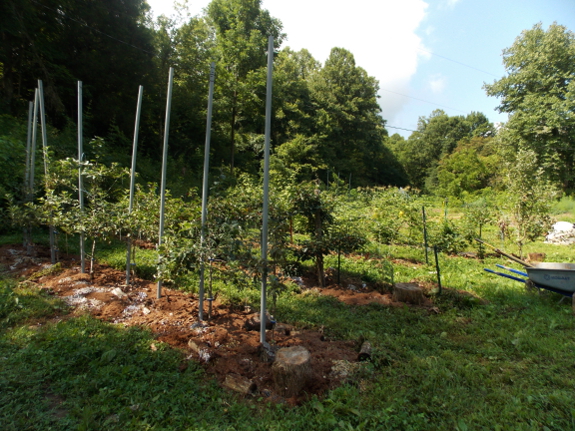
Mental issues aside, Mark
and I have some thoughts for improving our composting-toilet before
changing back over to the now-emptied bin this fall, but I'm pretty
happy with version 1.0 as-is. Human "waste" has become an asset to
the farm rather than a hindrance --- just what I was looking for!
Want more in-depth information? Browse through our books.
Or explore more posts by date or by subject.
About us: Anna Hess and Mark Hamilton spent over a decade living self-sufficiently in the mountains of Virginia before moving north to start over from scratch in the foothills of Ohio. They've experimented with permaculture, no-till gardening, trailersteading, home-based microbusinesses and much more, writing about their adventures in both blogs and books.
Want to be notified when new comments are posted on this page? Click on the RSS button after you add a comment to subscribe to the comment feed, or simply check the box beside "email replies to me" while writing your comment.

You might consider sticking a thermometer into the hart of the bin when you've closed it.
Monitoring the temperature difference from the ambient temperature might allow you to check both whether it heats up enough to kill the pathogens and when the biological activity drops to background levels.
After the latter it should be fine to use, I'd say.